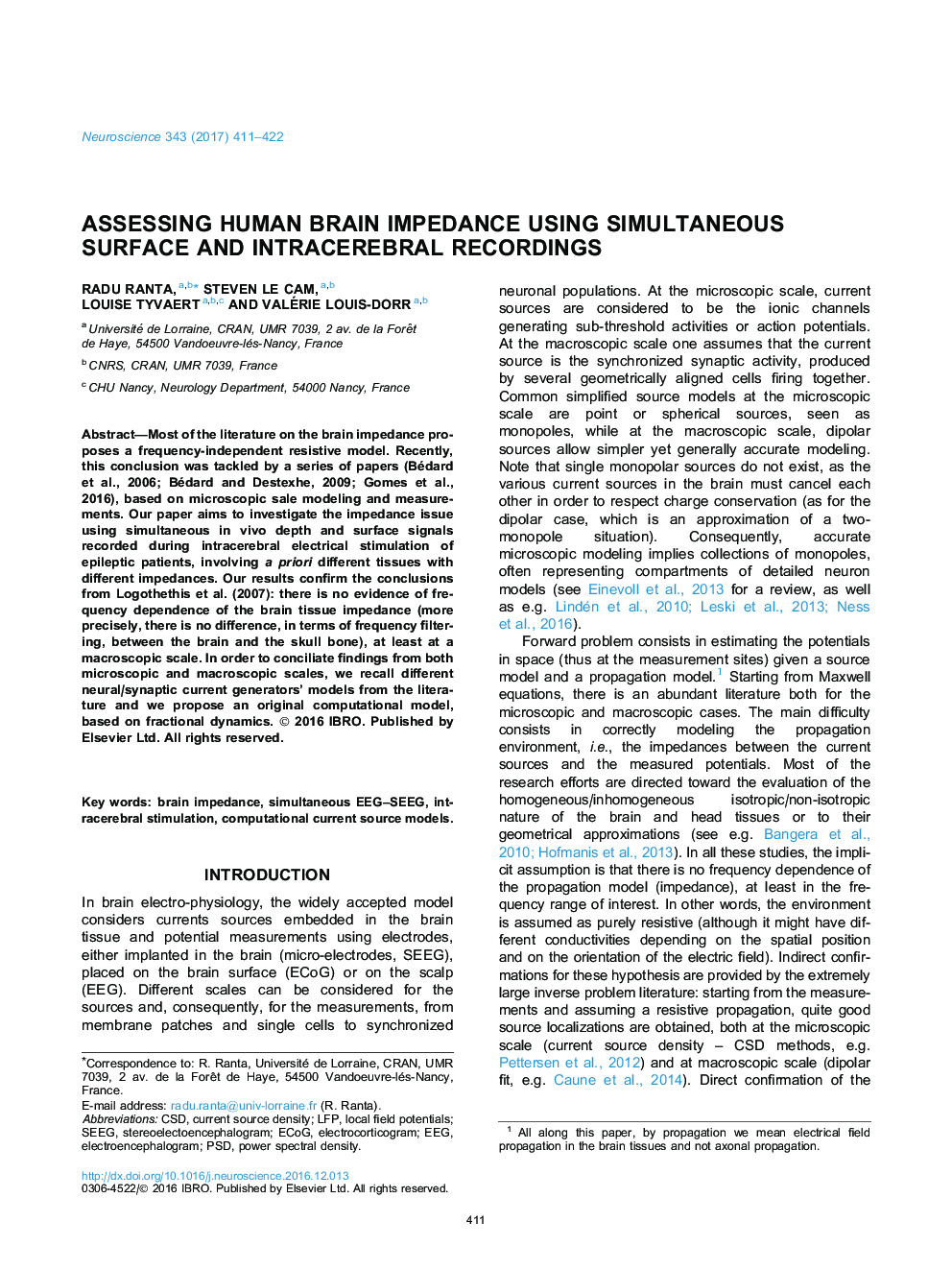| Article ID | Journal | Published Year | Pages | File Type |
|---|---|---|---|---|
| 5737892 | Neuroscience | 2017 | 12 Pages |
â¢Original experimental method for assessing the head tissues' frequency responses.â¢Similar frequency responses (gain excluded), independent of source-sensor distances.â¢Fractional computational models with few parameters for the synaptic current sources.â¢Favorable comparison with kinetic/computational models for different synapses.â¢Simulated LFP signals having the frequency characteristics reported in the literature.
Most of the literature on the brain impedance proposes a frequency-independent resistive model. Recently, this conclusion was tackled by a series of papers (Bédard et al., 2006; Bédard and Destexhe, 2009; Gomes et al., 2016), based on microscopic sale modeling and measurements. Our paper aims to investigate the impedance issue using simultaneous in vivo depth and surface signals recorded during intracerebral electrical stimulation of epileptic patients, involving a priori different tissues with different impedances. Our results confirm the conclusions from Logothethis et al. (2007): there is no evidence of frequency dependence of the brain tissue impedance (more precisely, there is no difference, in terms of frequency filtering, between the brain and the skull bone), at least at a macroscopic scale. In order to conciliate findings from both microscopic and macroscopic scales, we recall different neural/synaptic current generators' models from the literature and we propose an original computational model, based on fractional dynamics.
